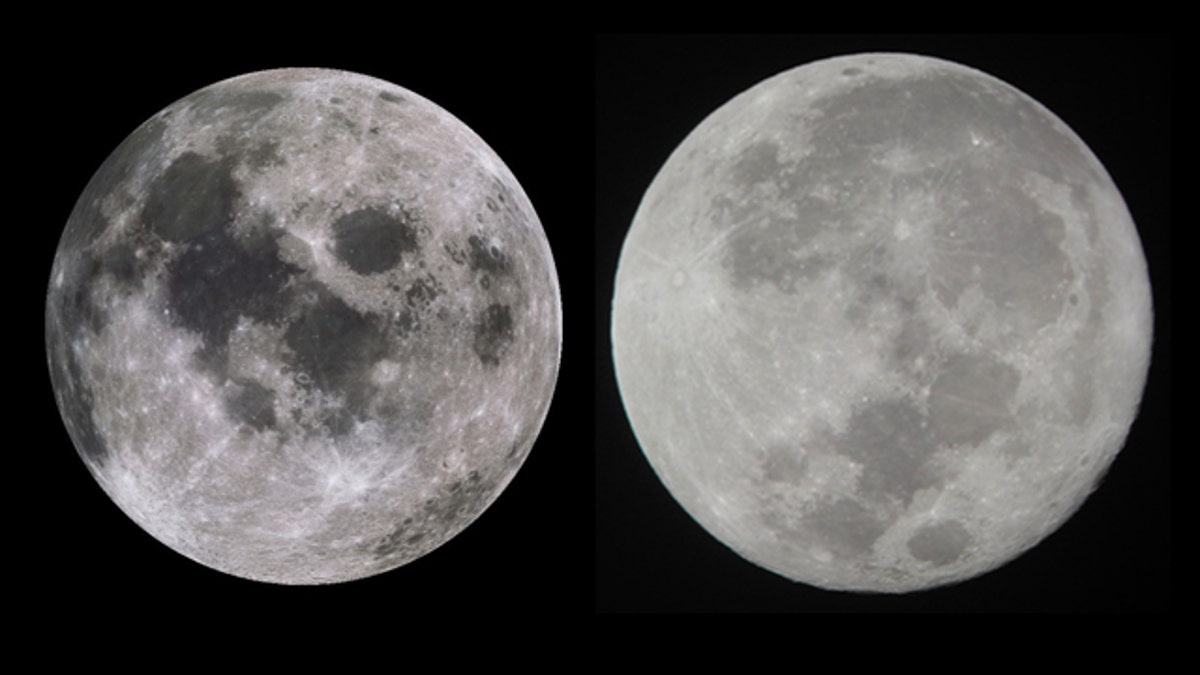
Does the Earth have multiple moons? Astronomers think so.
Earth once had two moons, until one of them made the fatal mistake of smacking into its big sister in what is being called the "big splat," some astronomers theorize.
The result: The planet was left with a single bulked-up and ever-so-slightly lopsided moon.
The astronomers came up with this scenario to explain why the moon's far side is so much more hilly than the one that is always facing Earth. The theory, outlined in a research paper published Wednesday in the journal Nature, comes complete with computer model runs showing how it would happen and an illustration that looks like the bigger moon getting a pie in the face.
Outside experts said the idea makes sense, but they aren't completely sold yet.
This all supposedly happened about 4.4 billion years ago, long before there was any life on Earth to gaze up and see the strange sight of dual moons. The moons themselves were young, formed about 100 million years earlier when a giant planet smashed into Earth. They both orbited Earth and sort of rose in the sky together, the smaller one trailing a few steps behind like a little sister in tow.
The smaller one was a planetary lightweight. The other was three times wider and 25 times heavier, its gravity so strong that the smaller one just couldn't resist, even though it was parked a good bit away.
"They're destined to collide. There's no way out. ... This big splat is a low-velocity collision," said study co-author Erik Asphaug, a planetary scientist at the University of California, Santa Cruz.
What Asphaug calls a slow crash is relative: It happened at more than 5,000 mph, but that's about as slow as possible when you are talking planetary smashups, Asphaug said. It's slow enough that the rocks didn't melt.
And because the smaller moon was more than 600 miles wide, the crash took a while to finish even at 5,000 mph. Asphaug likened the smaller moon to a rifle bullet and said, "People would be bored looking at it because it's taking 10 minutes just for the bullet to bury itself in the moon. This is an event if you were looking at, you'd need a big bag of popcorn."
The rocks and crust from the smaller moon would have spread over and around the bigger moon without creating a crater, as a faster crash would have done.
"The physics is really surprisingly similar to a pie in the face," Asphaug said.
And about a day later, everything was settled and the near and far sides of the moon looked different, Asphaug said.
Co-author Martin Jutzi of the University of Bern in Switzerland said the study was an attempt to explain the odd crust and mountainous terrain of the moon's far side. Asphaug noticed it looked as if something had been added to the surface, so the duo started running computer simulations of cosmic crashes.
The theory was the buzz this week in Woods Hole, Mass., at a conference of scientists working on NASA's next robotic mission to the moon, said H. Jay Melosh of Purdue University.
"We can't find anything wrong with it," Melosh said. "It may or may not be right."
Planetary scientist Alan Stern, former NASA associate administrator for science, said it is a "very clever new idea," but one that is not easily tested to learn whether it is right.
A second moon isn't just an astronomical matter. The moon plays a big role in literature and song. And poet Todd Davis, a professor of literature at Penn State University, said this idea of two moons -- one essentially swallowing the other -- will capture the literary imagination.
"I'll probably be dreaming about it and trying to work on a poem," Davis said.
